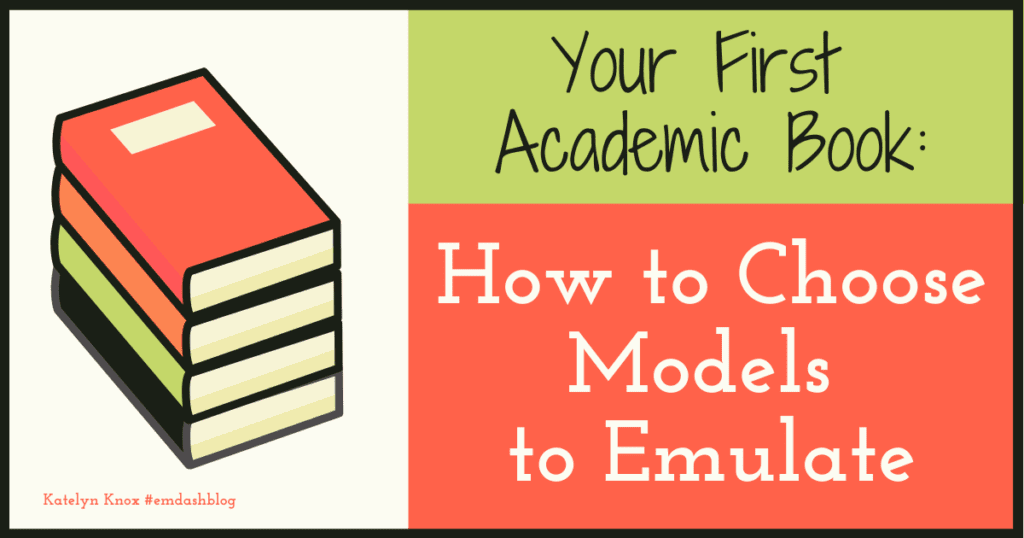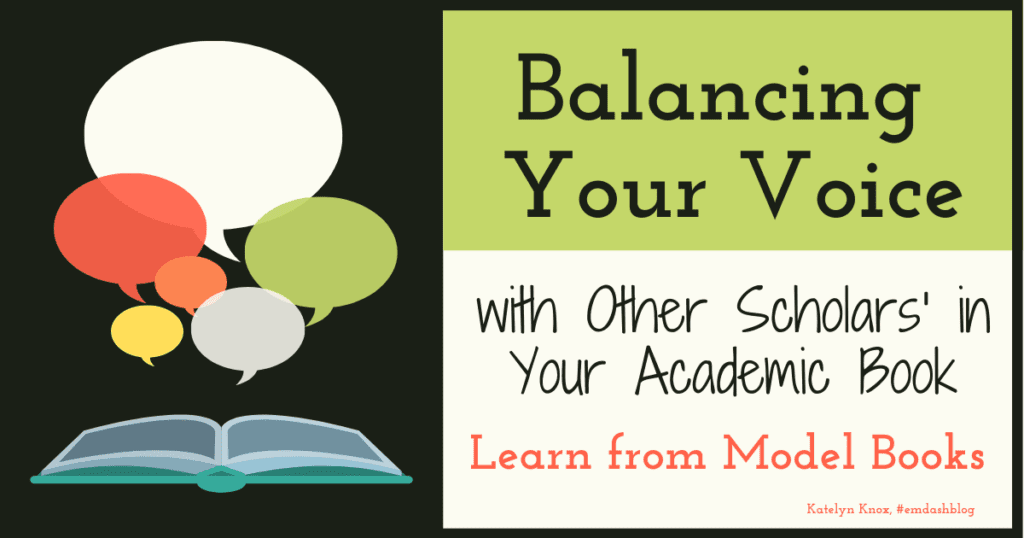You might know that your book will need to speak to scholars in your discipline(s) and have heard that it’s unwise to describe your book’s audience as “a general audience interested in [topic]” on your academic book proposal. But regardless of what your book proposal says, you might still hold out hope that your book will, nevertheless, speak to wider, non-academic audiences.
In this post, I outline the practical and stylistic factors that make this highly unlikely. Stick around until the end, where I give you an immediate, concrete way to understand the stylistic difference between writing for a scholarly audience and a general audience.
“General Audience” Publishers: University Presses vs. Trade Presses
If you truly hope for your book to reach a general audience, you have two broad options regarding press type: university presses or trade presses (academic or not). Generally speaking, trade presses publish books for a general audience and have the marketing, promotion, and distribution apparatuses to connect your book with these readers. Both, types of presses, though, operate quite differently and have different consequences for your academic career.
Consequences for Tenure
If you hope for your book to count in your research dossier (for academic jobs or tenure and promotion), the prestige of the press matters. For committees and reviewers, university presses still tend to be the gold standard. So, though books published with trade presses might have an easier time reaching a wider audience, get advice from a trusted mentor regarding how (if at all) publishing with such a press would impact your dossier.
Author Profile vs. Author Platform
Both types of press will want your book proposal to offer a convincing answer to the questions “why are you the right person to write this book?” And “how confident can we be that you can speak to your supposed audience?”
Each type of press, though, will take different evidence as proof of your authority. University presses often expect to see the types of professional activities you’re probably already doing–teaching courses on your topic, giving conference papers, writing peer-reviewed scholarship–as the cornerstone of a strong author profile.
While such activities can help your case with trade presses, many will want to see much broader evidence of a strong “author platform.” Do you have social media followings? An email list? Have you successfully published pieces on your topic in general audience publications? Given media appearances on the topic?
Other Dimensions
There are also a few other factors you would have to consider when pursuing publication with a non-academic trade press. First, while it is rare for scholars to get an agent to pitch their book to university presses, the practice is common (read: mostly required) for non-academic trade presses.
Second, unlike university presses (which are largely nonprofits), non-academic trade presses are businesses. So, whereas university presses can publish many books at a loss (though they prefer to minimize said losses), trade presses will seek to avoid losses. Consequently, non-academic trade presses will more heavily weight a project’s commercial potential when deciding which books to publish.
“General Audience” Style: How You Will Write the Book
OK, so you’re likely convinced by this point that if you hope for your book to serve as the cornerstone of your tenure and promotion dossier (or land you a job), the gold standard is still publication with a university press or an academic trade press, not a non-academic trade press.
But your university press-published book can still reach a general audience beyond just academics in your field, right?
Maybe, but probably not.
First, think about conventions around peer reviewable scholarship in your field. Though elsewhere, I caution you to judiciously deploy existing scholarship and foreground your voice–that is, resist rehashing entire intellectual genealogies–peer reviewers will expect to see some references to the scholarship with which your book is in dialog. (In fact, see Chapter 16 of The Dissertation-to-Book Workbook for quick tips on how to make your book instantly sound more authoritative.)
Additionally, your book- and chapter-level claims likely depend on and/or seek to contest one or more central (and sometimes complex) concepts, like masculinity, heteronormativity, or national identity. Writing for a general audience would mean you cannot presume readers would have read key theoretical texts in your field or be familiar with the longstanding discussions around these terms. Ask yourself: would you be able to get a general reader up to speed on these terms without simultaneously alienating your specialist audience?
Finally, think about the ends to which you mobilize your claims. Typically, the significance of peer reviewable scholarship stems from its intervention within particular disciplines. These disciplinary claims for significance, however, are unlikely to resonate with a broader audience.
Comparing a General Audience Book and a University Press Book
With the above conventions in mind, compare the prefaces of two books written by the same Harvard historian: Fredrik Logevall.
A General Audience (Pulitzer Prize Winning) Biography Published by Random House
First, read the preface of his Pulitzer Prize winning JFK: Coming of Age in the American Century, 1917-1956, published with Random House (2020). (Click “Look Inside” and you should be able to read the whole preface.)
Ask: where does he make claims for significance? How much does he explicitly evoke existing scholarship? What characterizes his “style”? How easy would it be for someone who never took an undergraduate course on Kennedy or this time period to follow?
A Scholarly Monograph Published with the University of California Press
Then, read the preface to his much earlier book Choosing War: The Lost Chance for Peace and the Escalation of War in Vietnam published with the University of California Press (1999). (Again, click “Look Inside” and you should be able to read the whole preface.) Of course, the twenty-one year difference between the two books accounts for some of the stylistic differences.
Nevertheless, ask yourself the same questions as above. What significant differences do you note between the two prefaces?
Finally, ask yourself (honestly) which style most resembles your book’s. If it’s the latter, your book likely has little realistic chance of reaching a “general audience.”


